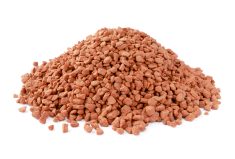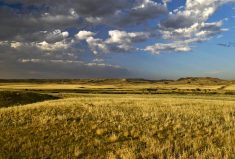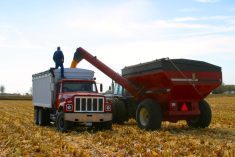Conservation and agriculture need not be at loggerheads in the fight to preserve and restore the tattered remains of North America’s Prairie grasslands.
“We can have conservation as a result of (agricultural) production,” Wes Jackson, founder of The Land Institute, told participants at the North American Prairie Conference via Skype.
A proponent and developer of grain producing perennial polycultures, the biologist and author spoke about crop trials where multiple crops grown in permaculture were harvested simultaneously, with seeds separated using a seed cleaner.
It’s not a new idea, but it’s one that has taken time to develop. And it is gaining some momentum.
Read Also

Mazergroup’s Bob Mazer dies
Mazergroup’s Bob Mazer, who helped grow his family’s company into a string of farm equipment dealerships and the main dealer for New Holland machinery in Saskatchewan and Manitoba, died July 6 from cancer.
“The first time I heard about this work was probably 20 years ago, and I thought, ‘well that will never happen’ and now look,” said Candice Savage, member of the Nature Conservancy of Canada.
Although she isn’t entirely optimistic about the future of Prairie conservation, she said the idea that agriculture could become a conservation tool which protects habitat for birds and wildlife is a positive one.
“It does seem more realistic now than it ever has in the past,” said Savage. “They are making progress.”
And now is the time to be making the move towards perennial agriculture, according to Jackson, who said technology has put the development of viable perennial crops within reach.
Tools ranging from greenhouses to molecular marking, and endosperm retrieval to nutrient gels have made it possible to develop perennial varieties that would have been difficult, if not impossible, to develop previously.
“Our ancestors would not likely have done these things,” Jackson said.
But don’t think these scientific aids will be required in perpetuity.
Once successful varieties are developed, Jackson said perennials will be self-perpetuating in the same manner as annuals. This technology is designed to catch them up with plant species that have had a head start of many millennia, he said.
But a move to perennials also requires a shift in the way people think about energy and fossil fuels. There must be a realization that there will be less resources available in the future, said Jackson.
“There is going to be a great reduction in fossil fuels for power,” he said. “And what we have to appreciate is how much of what I call the scaffolding of civilization was put there by high-density carbon.”
Urging people to view the world in terms of ecology and not industry, Jackson added it was an abundance of easily available energy that created the conservation crisis faced by the world today.
David Young, a former civil servant and one of the founders of the Natural Resources Institute at the University of Manitoba, agrees it was the advent of carbon fuels in agriculture that led to many of the problems conservationists now face.
“A man with a steel plow and a horse, could in the spring… working really hard… perhaps turn three or four acres,” he said.
But with the arrival of tractors and fossil fuels, Young said it was inevitable that ideas of progress would take priority over the natural landscape.
But what happens next in Prairie conservation depends on who you ask.
“I think perspectives are changing faster at the grassroots level than they are changing at the top,” said Dana Bush, a Saskatchewan-based ecologist. “Government has to get dragged in to the 21st century kicking and screaming.”
However, an unresponsive government doesn’t mean change must grind to a halt, according to Rebecca Magnus of Nature Saskatchewan.
“When we talk about maybe having to wait until another political party comes along so we can have a better voice, or do something, I simply can’t agree with that,” she said.
Small efforts like emailed news letters, and alerts for invasive species can be effective now, said Magnus, adding research and conservation projects are ongoing.
“Small things, communication, this is important… we are not at a standstill,” she said.


















